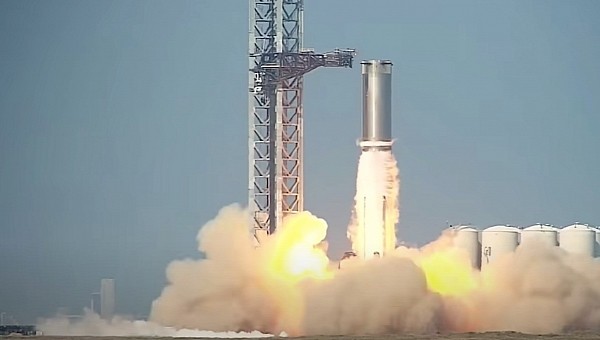Development of new hardware for space exploration is not easy business, as it’s both financially straining and time-consuming for the companies involved. One thing we can almost always be certain of, though, in this field is that most of the time, we’re left with some extraordinary piece of machinery at the end of all those work hours and money spent.
Now that the NASA Space Launch System (SLS) pushed the Orion capsule on its maiden voyage around the Moon to the farthest point reached by a crew-capable spaceship (268,563 miles/432,210 km away from Earth), there’s not much to look forward to in terms of space launches this year.
There is one such event though that might steal the crown of most important of its kind in 2023, and that would be the highly anticipated (and long-delayed) departure of the SpaceX Starship. Initially set to take place last year, the first orbital flight of what's supposed to be the precursor of ships meant to take humans to Mars is likely to do so over the next few months.
At the time of writing, Starship does not have an official launch date attached to it. Yet, responding to a question asked on Twitter whether we’ll see the contraption lift off at the end of this month, SpaceX’s Elon Musk denied that’s the case.
Instead, he says, a real shot at getting the Starship off the ground comes in late February, but a “March launch attempt appears highly likely.” Note the use of the term “attempt” in Musk’s reply, as another thing space launches have in common is their tendency to fail.
The orbital test Starship comprises the Booster 7 Super Heavy first-stage prototype, a giant rocket powered by no less than 33 Raptor engines. When they’ll all ignite for the test, they might make Starship the most powerful rocket ever flown, more powerful than the SLS even, as each engine can develop 510,000 lbf.
On top of the booster sits Ship 24, which is the part of the Starship that’ll actually reach orbit. It too is powered by Raptor engines, though a much smaller number of them (just six).
Whenever it departs (and it eventually will), Starship will do so from SpaceX’s Boca Chica Beach, Texas Starbase facility. The mission profile calls for Ship 24 to move around the planet once, at orbital altitude, and then come back to Earth.
Just like all other SpaceX machines do, the Starship’s booster will come down back and land on a pad after Ship 24 had been put on its trajectory. The spacecraft itself will not attempt a landing, but will go for a splashdown off the coast of Hawaii some 90 minutes after it departed Texas.
There is one such event though that might steal the crown of most important of its kind in 2023, and that would be the highly anticipated (and long-delayed) departure of the SpaceX Starship. Initially set to take place last year, the first orbital flight of what's supposed to be the precursor of ships meant to take humans to Mars is likely to do so over the next few months.
At the time of writing, Starship does not have an official launch date attached to it. Yet, responding to a question asked on Twitter whether we’ll see the contraption lift off at the end of this month, SpaceX’s Elon Musk denied that’s the case.
Instead, he says, a real shot at getting the Starship off the ground comes in late February, but a “March launch attempt appears highly likely.” Note the use of the term “attempt” in Musk’s reply, as another thing space launches have in common is their tendency to fail.
The orbital test Starship comprises the Booster 7 Super Heavy first-stage prototype, a giant rocket powered by no less than 33 Raptor engines. When they’ll all ignite for the test, they might make Starship the most powerful rocket ever flown, more powerful than the SLS even, as each engine can develop 510,000 lbf.
On top of the booster sits Ship 24, which is the part of the Starship that’ll actually reach orbit. It too is powered by Raptor engines, though a much smaller number of them (just six).
Whenever it departs (and it eventually will), Starship will do so from SpaceX’s Boca Chica Beach, Texas Starbase facility. The mission profile calls for Ship 24 to move around the planet once, at orbital altitude, and then come back to Earth.
Just like all other SpaceX machines do, the Starship’s booster will come down back and land on a pad after Ship 24 had been put on its trajectory. The spacecraft itself will not attempt a landing, but will go for a splashdown off the coast of Hawaii some 90 minutes after it departed Texas.
We have a real shot at late February. March launch attempt appears highly likely.
— Elon Musk (@elonmusk) January 8, 2023






